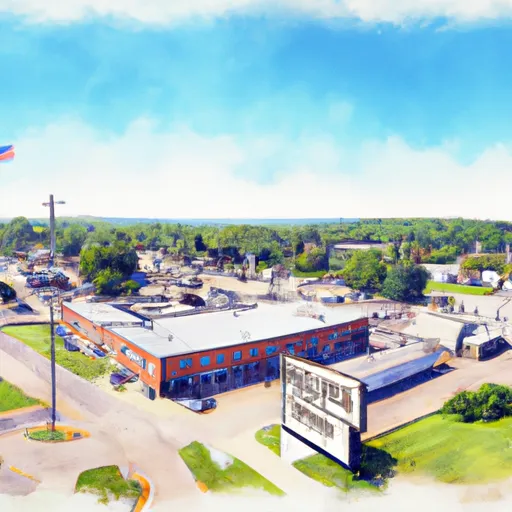-
 Snoflo Premium
Snoflo Premium
Get unlimited access to all our content
With no Ad interruptions! - Start Your Free Trial Login with existing account
Leonard
Eden Index
Climate
4.8
•
Recreation
2.0
•
Community
•
Safeguard
2.6/10

Located in Clearwater County, Minnesota, Leonard is a small town with a population of approximately 50 residents. The town experiences a typical continental climate, characterized by hot summers and cold winters. Summers are warm with average temperatures ranging from 70°F to 80°F, while winters are cold, with temperatures often dropping below freezing, ranging from 10°F to 30°F. Leonard receives an average annual rainfall of around 24 inches, with snowfall being common during the winter months.
Hydrologically, Leonard is situated near several lakes and rivers, making it a great destination for water-based activities. Nearby lakes, such as Alice Lake and Elbow Lake, offer opportunities for fishing, boating, and swimming. Clearwater River, which runs through the town, is also a popular spot for fishing and canoeing.
Outdoor enthusiasts can enjoy various recreational activities in Leonard. The town is surrounded by vast forests and natural areas, providing opportunities for hiking, camping, and wildlife observation. Hunters can explore the nearby state forests for deer, bear, and small game hunting. In winter, snowmobiling, cross-country skiing, and ice fishing are popular activities in the region.
Overall, Leonard, Minnesota, provides a scenic and diverse outdoor environment, attracting visitors who enjoy outdoor recreational activities year-round.
What is the Eden Index?
The Snoflo Eden Index serves as a comprehensive rating system for regions, evaluating their desirability through a holistic assessment of climate health, outdoor recreation opportunities, and natural disaster risk, acknowledging the profound impact of these factors on livability and well-being.
Climate Health Indicator (CHI): 4.8
Leonard receives approximately
620mm of rain per year,
with humidity levels near 83%
and air temperatures averaging around
4°C.
Leonard has a plant hardyness factor of
3, meaning
plants and agriculture in this region thrive during a short period during spring and early summer. Most
plants will die off during the colder winter months.
By considering the ideal temperature range, reliable water supplies, clean air, and stable seasonal rain or snowpacks, the Climate Health Indicator (CHI) underscores the significance of a healthy climate as the foundation for quality living.
A healthy climate is paramount for ensuring a high quality of life and livability in a region, fostering both physical well-being and environmental harmony. This can be characterized by ideal temperatures, reliable access to water supplies, clean air, and consistent seasonal rain or snowpacks.
Weather Forecast
Streamflow Conditions
Lower Red
Area Rivers
Lower Red
Snowpack Depths
Lower Red
Reservoir Storage Capacity
Lower Red
Groundwater Levels
Recreational Opportunity Index (ROI): 2.0
The Recreational Opportunity Index (ROI) recognizes the value of outdoor recreational options, such as parks, hiking trails, camping sites, and fishing spots, while acknowledging that climate plays a pivotal role in ensuring the comfort and consistency of these experiences.
Access to outdoor recreational opportunities, encompassing activities such as parks, hiking, camping, and fishing, is crucial for overall well-being, and the climate plays a pivotal role in enabling and enhancing these experiences, ensuring that individuals can engage in nature-based activities comfortably and consistently.
Camping Areas
| Campground | Campsites | Reservations | Toilets | Showers | Elevation |
|---|---|---|---|---|---|
| West Hawk Lake - Whiteshell Provincial Park | 122 | 1,140 ft | |||
| Caddy Lake - Whiteshell Provincial Park | 26 | 1,069 ft | |||
| Birch Point Provincial Park | 26 | 1,063 ft | |||
| Faunce - Beltrami Island SF | 6 | 1,295 ft | |||
| Falcon Lake Beach - Whiteshell Provincial Park | 234 | 1,076 ft | |||
| Warroad City Campground | 182 | 1,076 ft | |||
| Falcon Lake Lakeshore - Whiteshell Provincial Park | 153 | 1,086 ft | |||
| Wolf Lake City Campground | 14 | 1,540 ft | |||
| Itasca State Park | 225 | 1,485 ft | |||
| Big Whiteshell - Whiteshell Provincial Park | 88 | 1,046 ft |
Nearby Fishing
Catastrophe Safeguard Index (CSI):
The Catastrophe Safeguard Index (CSI) recognizes that natural disaster risk, encompassing floods, fires, hurricanes, and tornadoes, can drastically affect safety and the overall appeal of an area.
The level of natural disaster risk in a region significantly affects safety and the overall livability, with climate change amplifying these risks by potentially increasing the frequency and intensity of events like floods, fires, hurricanes, and tornadoes, thereby posing substantial challenges to community resilience and well-being.
Community Resilience Indicator (CRI):
The Community Resilience Indicator (CRI) recognizes that education, healthcare, and socioeconomics are crucial to the well-being of a region. The CRI acknowledges the profound impact of these elements on residents' overall quality of life. By evaluating educational resources, healthcare accessibility, and economic inclusivity, the index captures the essential aspects that contribute to a thriving community, fostering resident satisfaction, equity, and social cohesion.

